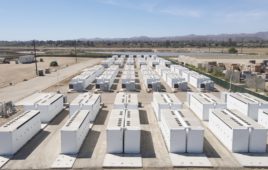In the second quarter of this year, the United States witnessed an overall increase in energy storage installations. However, it is disheartening to note that residential energy storage experienced a decline during this period. The reason behind this setback can be attributed to supply shortages that have plagued the industry.
The Impact of Supply Shortages on Residential Energy Storage
Supply shortages have had a significant impact on the residential energy storage sector, leading to a decrease in installations during Q2. These shortages have been primarily driven by various factors such as disruptions in global supply chains and increased demand for key components used in these systems.
As homeowners increasingly recognize the importance of sustainable and reliable power solutions, there has been a surge in demand for residential energy storage systems. Unfortunately, manufacturers have struggled to keep up with this heightened demand due to limited availability of critical components like lithium-ion batteries and inverters.
This shortage has not only affected new installations but also hindered maintenance and repair services for existing residential energy storage systems. Homeowners who were planning upgrades or replacements faced delays as suppliers grappled with sourcing necessary parts.
Navigating Challenges: Industry Response
The challenges posed by supply shortages require swift action from both industry stakeholders and policymakers alike. Collaboration between manufacturers, distributors, and government bodies is crucial to address these issues effectively.
To mitigate future supply chain disruptions, it is imperative for companies within the sector to diversify their sourcing strategies. Exploring alternative suppliers or investing in domestic production capabilities can help reduce reliance on single sources vulnerable to disruption.
Policymakers should also play an active role by incentivizing local manufacturing initiatives through grants or tax benefits. By supporting domestic production facilities for critical components, governments can foster a more resilient and self-sufficient energy storage industry.
Looking Ahead: A Promising Future for Residential Energy Storage
Despite the challenges faced in Q2, the residential energy storage sector remains poised for growth. As supply chains stabilize and manufacturers adapt to changing market dynamics, we can expect a resurgence in installations.
The increasing awareness of climate change and the need for sustainable energy solutions will continue to drive demand for residential energy storage systems. With concerted efforts from all stakeholders involved, including government support and industry innovation, we can overcome these temporary setbacks and pave the way towards a greener future.
In Conclusion
The second quarter of this year witnessed an overall rise in U.S. energy storage installations; however, residential installations experienced a decline due to supply shortages. These shortages have impacted both new installations as well as maintenance services for existing systems. To address these challenges effectively, collaboration between industry stakeholders and policymakers is crucial. By diversifying sourcing strategies and supporting domestic production initiatives, we can build a more resilient residential energy storage sector that meets growing demand while reducing reliance on vulnerable global supply chains.


